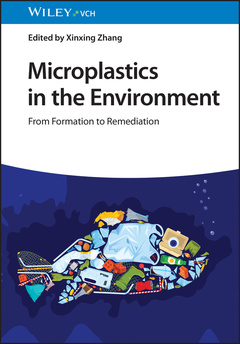Microplastics in the Environment From Formation to Remediation
Coordonnateur : Zhang Xinxing

Authoritative reference addressing the characteristics, technologies, and solutions surrounding the most concerning environmental pollutant
Microplastics in the Environment delivers a systematic and in-depth overview of microplastics generation mechanisms, risk prevention, and control solutions.
Written by a highly qualified academic with significant research experience in microplastic pollution treatment, green polymer material functionalization, and recycling of solid waste, Microplastics in the Environment explores sample topics including:
- Characteristics of microplastics, such as their large specific surface area and small size, resulting in the formation of composite contamination
- New microplastics blocking approaches and technologies, and the mechanism of microplastics generation under the coupling effect of multiple environmental factors
- Transport and migration of microplastics, as well as their ecotoxicity to organisms in various environments, especially the complex estuarine environment
- The current state of plastic production, with insight on how society can find solutions to the expanding plastics industry
Microplastics in the Environment is an essential reference on the subject for polymer chemists, materials scientists, environmental chemists, plastics technologists, and ecotoxicologists, as well as all professionals in the plastics industry, especially those focused on sustainability.
1.1. The generation of primary microplastics
1.2. The generation of secondary microplastics
2. MIGRATION AND TRANSFORMATION OF MICROPLASTICS
2.1 Migration and transformation in water
2.2 Migration and transformation in soil
2.3 Migration and transformation in atmosphere
3. ECOTOXICITY OF MICROPLASTIC
3.1 Estuarine and marine organisms
3.2 Freshwater organisms
3.3 Soil organisms
3.4 Human health
4. SOLUTION OF MICROPLASTICS
4.1 Reduction
4.2 Substitution
4.3 Recycling
4.4 Control in the environment
5. CONCLUSION
Xinxing Zhang is a Doctor of Engineering, Doctoral Supervisor, and Professor at Sichuan University. He was a Chief Expert of the China National Key R&D Program during the 13th Five-year Plan and recipient of the Sichuan Science Fund for Outstanding Young Scholars. He is currently the director of the Sichuan Tire Rubber Powder Functionalization and Modification Engineering Laboratory and the guest editor of Materials and other journals.
Date de parution : 09-2024
17x24.4 cm



